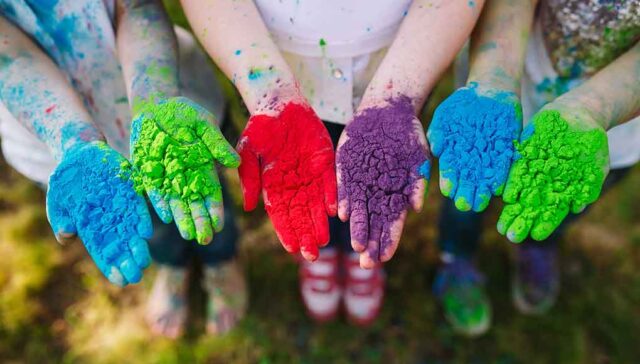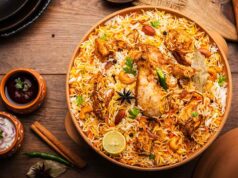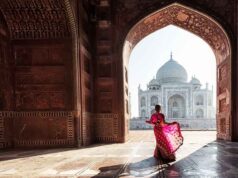Are you ready to explore the vibrant culture of India and all its colorful festivals? I’ve been studying Indian culture for years and there is definitely an exciting part of me that loves everything about India’s music, art, food, dance, and of course festivals! For those who are curious about 5 fascinating Indian festivals in particular – Diwali, Holi, Pongal Makar Sankranti –I’m here to provide a comprehensive guide.
From what rituals take place to when they occur throughout the year; we’ll cover it all so you can gain a thorough understanding on these special occasions. We’ll also discuss how the Hindu religion plays an important role in each festival as this is something many people may not know. Plus I’ll give my top tips on how you too could experience one or more of these events if you wanted to someday! Whether your goal is learning about the incredible culture or planning a trip around one of them-you’ve come to the right place. So let’s get started exploring five fascinating Indian festivals together!
1. Diwali: The Festival of Lights
The festival of Diwali holds immense significance in the Hindu culture and is celebrated with great enthusiasm and joy. It is believed that on this day, Lord Rama returned to Ayodhya after defeating the demon king Ravana. The lighting of diyas symbolizes the triumph of light over darkness, knowledge over ignorance.
One of the most captivating aspects of Diwali is the breathtaking display of lights. Homes are adorned with strings of twinkling fairy lights, creating a magical atmosphere that illuminates every nook and corner. The streets come alive with vibrant decorations, from intricately designed rangoli patterns made using colored powders or flower petals to hanging lanterns adding a touch of elegance to the festivities.
Diwali also brings people together as families and friends exchange gifts, sweets, and heartfelt wishes. It is common for households to prepare an array of mouthwatering delicacies like laddoos, gulab jamuns, and savory snacks that are shared among loved ones. This spirit of sharing extends beyond immediate family members as communities organize charity events to help those in need.
Moreover, another significant tradition during Diwali is gambling! Yes, you heard it right – card games like Teen Patti and Rummy are played extensively during this time. It adds an element of fun-filled excitement amidst all other traditional rituals.
In conclusion, Diwali truly encompasses the essence of happiness and positivity. From its symbolic meaning to its festive traditions filled with love and unity – this celebration undeniably brings everyone closer while spreading joy across India’s vast landscape.
2. Holi: The Festival of Colors
Holi is a kaleidoscope of colors, an explosion of joy that fills the air with laughter and excitement. As the sun rises higher in the sky, people gather outside, armed with bags of brightly hued powders ready to brighten up everyone’s day. The atmosphere crackles with anticipation as friends and strangers alike engage in friendly battles, liberally smearing each other’s faces and clothes with vibrant pigments.
Amidst the chaos, there is an undeniable sense of unity that transcends boundaries. The divisions that often plague our society – be it age, gender or social status – dissolve into oblivion as people come together to celebrate this ancient tradition. It’s a time when we can put aside our differences and focus on what unites us: our shared humanity.
The rhythm of traditional music fills the air as dancing feet create a tapestry of movement – graceful twirls and rhythmic steps weaving their way through the crowd. In between dances, people savor mouthwatering gujiyas – sweet dumplings made from flour and stuffed with nuts or dried fruits – symbolizing abundance and prosperity for everyone.
Holi is not just about revelry; it is also a celebration of renewal. As water guns spray jets of cool water onto heated bodies under the scorching sun, it becomes a metaphorical cleansing – washing away past grievances and making room for new beginnings.
In summary:
– Holi celebrates spring’s arrival
– People throw colored powders at each other
– Traditional music sets the festive mood
– Delicious sweets like gujiyas are enjoyed
– It promotes unity among all individuals
Like what you are reading on 5 Things India? Check out some more interesting articles about India. 5 iconic Indian landmarks to visit
3. Pongal: The Harvest Festival
The festival is named after the dish itself, and it holds great significance in the Tamil culture. Pongal is not just a mere celebration of the harvest; it is a time to express gratitude for nature’s bounty and to honor the hard work of farmers.
During Pongal, people wake up early in the morning and begin their preparations for the day. The first step involves boiling freshly harvested rice in pots decorated with colorful flowers and mango leaves. As the rice boils, it overflows from the pot symbolizing abundance and prosperity. This overflowing rice, known as “Pongal,” is considered an auspicious sign.
Once cooked, people offer this delicious dish to God along with other traditional delicacies like sugarcane pieces and coconut. The aroma of freshly made Pongal fills every household, creating a warm atmosphere that brings families together.
Besides cooking dishes like sweet Pongal or savory pongal (known as venpongal), another highlight of this festival is decorating homes with beautiful kolams – intricate designs created using colored powders at entrances. These vibrant patterns are believed to bring good luck and ward off negative energy.
Pongal festivities also include various cultural activities such as dance performances, music concerts, bull-taming events called “Jallikattu,” and kite flying competitions. It’s a time when friends and relatives gather to celebrate with joyous hearts.
Overall, Pongal serves as a reminder that we should always be grateful for all that nature provides us with while cherishing our connections with loved ones during such festive occasions.
4. Makar Sankranti: The Kite Flying Festival
During this festival, the clear blue skies are adorned with colorful kites of various shapes and sizes. The air is filled with laughter and shouts of excitement as people gather on rooftops and open fields to fly their kites. It’s a sight to behold, watching these tiny dots of vibrant colors dancing gracefully in the wind.
The art of kite flying requires skill, patience, and precision. Each participant carefully chooses their kite based on its design and material. Some prefer traditional diamond-shaped kites while others opt for more innovative ones shaped like birds or animals. The strings attached to the kites are coated with powdered glass known as “manja,” which allows them to cut through other strings, adding an element of competition to the festivities.
As the sun sets on this special day, families come together to enjoy a delicious feast comprising traditional sweets made from sesame seeds and jaggery. The aroma fills the air as plates brimming with tilgul ladoos (sesame seed sweet balls) are passed around amidst laughter and conversations.
Makar Sankranti is not just about flying kites; it represents unity among communities as people from different backgrounds come together to celebrate this joyous occasion. It’s a time when old grievances are forgotten, friendships renewed, and new connections formed under a common love for this beautiful festival.
In conclusion, Makar Sankranti is a celebration that holds deep cultural significance in India. It brings people closer while reminding us of the importance of embracing change and leaving behind our sorrows. So next time you see colorful kites dotting the sky during January or February in India, remember that it’s not just a fun activity but also an expression of hope for brighter days ahead.
5.Navratri: Nine Nights Devoted To Goddess Durga
During Navratri, the air feels charged with excitement. The streets are adorned with colorful lights and decorations. People dress up in their finest Indian attire, the women donning exquisite traditional chaniya cholis and intricately designed jewelry, while men opt for vibrant kurtas or dhotis. As dusk falls, the beats of the dhol reverberate through the city, beckoning everyone to join in on the dance floor.
Garba is a traditional Gujarati folk dance performed during Navratri. It involves circular movements and rhythmic hand clapping while dancing around an image or idol of Goddess Durga. The dancers form concentric circles that spin in perfect synchronization, creating a mesmerizing sight as they twirl gracefully to the music’s infectious rhythm.
Dandiya Raas is another energetic dance form associated with Navratri. In this dance, participants use two decorated sticks called “dandiyas” to strike each other’s sticks as part of a choreographed routine. The skilled dancers move swiftly and gracefully to evade their partner’s strikes while maintaining harmony with the music.
The energy and enthusiasm during these dances are contagious! You can feel your heart pounding as you join hands with strangers-turned-friends, swirling and swaying together under twinkling lights. It doesn’t matter if you’re a seasoned dancer or new to this artform; everyone is welcomed onto the dance floor with open arms.
Navratri truly captures India’s rich cultural heritage by blending devotion, music, and movement into an unforgettable experience for all who participate. So come immerse yourself in this nine-night extravaganza filled with joyous celebrations that will leave you feeling exhilarated long after it ends!
FAQs:
1. Q: What are the most fascinating Indian festivals?
A: Some of the most fascinating Indian festivals include Diwali, Holi, Navratri, Eid-ul-Fitr, and Ganesh Chaturthi.
2. Q: When is Diwali celebrated in India?
A: Diwali, also known as the Festival of Lights, is typically celebrated between October and November each year. The exact date varies based on the Hindu lunar calendar.
3. Q: What is unique about Holi festival in India?
A: Holi is a vibrant and lively festival known for its colorful celebrations with people throwing colored powders and water at each other. It symbolizes unity, love, and joy while marking the arrival of spring in India.
4. Q: How long does Navratri last in India?
A: Navratri spans nine nights and ten days as per the Hindu lunar calendar. This festival honors Goddess Durga’s triumph over evil forces and includes various cultural performances such as Garba dance.
5. Q: What significance does Ganesh Chaturthi hold?
A: Ganesh Chaturthi celebrates the birth of Lord Ganesha, who is widely revered as the remover of obstacles and bestower of good fortune in Hindu mythology. During this festival in India, beautifully crafted idols of Lord Ganesha are worshipped before being immersed into a body of water to bid farewell until next year’s celebration.









